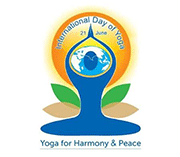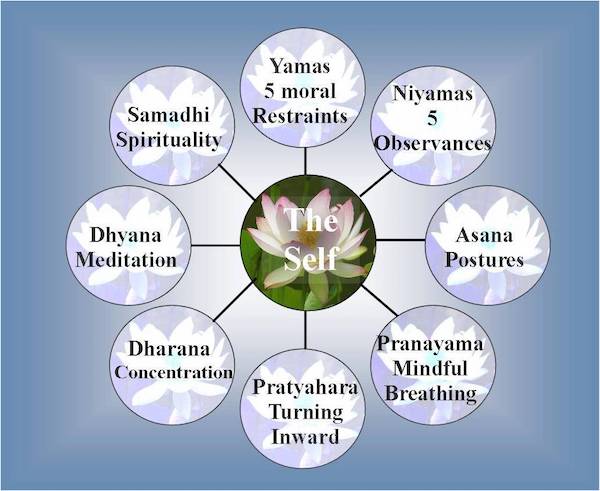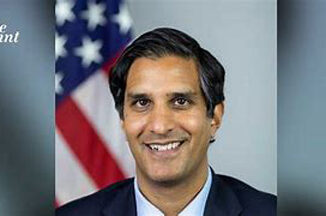
Get the Most out of Yoga – the 3 step Blueprint
By Arun Goel
 There are several reasons why you may like to hop onto the Yoga bandwagon. The reasons are many; the goal ultimately the same (with or without your conscious knowing).
There are several reasons why you may like to hop onto the Yoga bandwagon. The reasons are many; the goal ultimately the same (with or without your conscious knowing).
Whether you are looking at Yoga as a tool for physical fitness, or as an aid to disease management or even for mental peace and ultimate bliss, you should adopt a blueprint for long-lasting effects.
Step 1:Purification and developing the right attitude
The maximum benefits of any Yoga practice can be had when the mind is ‘purified’ and the attitude is correct.
Yoga lays down clear pointers that the aspirant should adopt towards himself and the society. These are laid out as Yamas and Niyamas.
The Yamas are the social code of conduct which are 5 in number. They are Ahimsa (non-violence), Satya (Truth), Asteya (Non-stealing), Brahmacharya (self-restraint), and Aparigraha (non-possession)
The Niyamas are the internal moral code. The 5 Niyamas are: Shauch (cleanliness), Santosh (contentment), Swadhyaya (self-study), Tapas (austerity), and Ishwar Pranidhana (surrender to God).
These Yamas and Niyamas are to be understood, imbibed and practiced in everyday life, 24×7. This adherence brings about a remarkable purification process that makes the body most receptive to gain the maximum out of yoga practices.
Today, even modern medicine has inextricably linked the mind-body complex as a whole for personal health maintenance which only underlines the necessity of this purification process.
Step 2:Practice
While working constantly at step 1, one should commence the practices. It is important (though not easy) to find the right Yoga teacher.
In Yoga, the paths are many, but the goal is one. Accordingly, there are several schools which adhere to different paths as a focus. Examine your inclination and find the teacher from the path you are inclined. For example, if your primary reason for Yoga is physical fitness, then research yoga schools with an extensive emphasis on Asanas of the Hatha Yoga kind. Contact them to locate a suitable teacher in your area.
At HealthAndYoga, we are constantly building an exhaustive teacher directory that helps connect aspirants to teachers. You can also search this exhaustive database by clicking here.
Remember, finding a suitable teacher is not easy and you may have to resort to several trials before you find someone whom you intuitively connect to. Also, as you grow in practice, you may find the need to move on to find more accomplished teachers.
Step 3:Study and Reading
Regular study of Yoga books and Scriptures are an important aspect of your personal development through Yoga.
Besides acting as motivational tools when your spirit is flagging, they provide important subtle insights which almost always spur you onto the next level.
Indeed, regular study is the only real way to grow in the absence of Guru, of whom most of us are sadly deprived in our modern lifestyle.
Making this 3-step process as your personal blueprint will undoubtedly help you get the most out of Yoga.
Benefits of Yoga:
It is an art of performing physiological, psychological and philosophical practices with a view to tone the body system for the attainment of permanent peace of soul and mind.
Physiological benefits:
It includes like improvement of energy levels, immune system becoming stronger, endurance increases, improvement in the respiratory system, muscular strength increases, and reaction time increases and so on.
Psychological benefits:
It includes like concentration improvement, social skills increase, anxiety decreases, memory improvement, cognitive functions improve and many more.
Philosophical benefits:
It includes like one feels the inner peace of mind, the practitioner becomes more proactive then reactive, feels excited and enthusiastic, behavioral modifications, etc.
Some feel that Yoga is the direct way to unite our soul with the god and for the attainment of peace and prosperity in day to day life. Getting your child practicing yoga at such a tender age benefits the overall health of your loved ones.
Yoga in the Office: A quick and effective stretch
By Evamarie Pilipuf
 It’s great when we can escape to a full hour of yoga, be it in a class or at home in front of a video, but let’s face it, that’s not always possible. Enter Yoga in the Office, a series of simple but effective suggested positions to help stretch the wrists, neck, shoulders, back and legs.
It’s great when we can escape to a full hour of yoga, be it in a class or at home in front of a video, but let’s face it, that’s not always possible. Enter Yoga in the Office, a series of simple but effective suggested positions to help stretch the wrists, neck, shoulders, back and legs.
Always talk to your doctor before starting any new exercise regime.
Neutral Posture:Neutral posture is probably the most important position to understand and practice, for it is the position in which the spine is most stable and properly aligned. Whether standing or sitting, it means placing the feet hip-distance apart and facing forward. If you’re sitting in a chair, your heels should sit right underneath your knees, so that your knees and hips are bent at right angles. Sit near the edge of your chair and sit tall. Lift your ribcage and roll your shoulders back to open the chest. Feel a slight arch to your low back and keep your chin level. Draw your belly button inward lightly, but not so much that your ribcage contracts downward. Breathe smoothly; hold this position for a minimum of 1-2 minutes, all the while concentrating on relaxing your shoulders.
Abdominal Breathing:As simple as it seems, a few minutes of proper abdominal breathing can do much to interrupt your stress levels and help you relax. Sit up in neutral posture and place your hands on your abdomen. As you inhale, feel your abdomen expand like a balloon, then slowly contract your abdomen by “sucking” in your belly button as you exhale. Relax your shoulders. Keep going: inhale with an expanding abdomen, and exhale while contracting your abdominal muscles. If possible, inhale through your nostrils, and exhale through pursed lips (think of the shape of your mouth when you’re about to pronounce the letter “P”). Stop the exercise immediately if you feel at all light-headed (proper abdominal breathing should not cause this). When you inhale, try not to lift your shoulders; let the breath “move” into your stomach.
Find the natural solutions to health disorders. Re-engineer your life to live in harmony with nature and you’ll be surprised how many nagging problems just vanish into thin air! We provide a range of learning aids and practicing tools for helping you onto this path. To read more on our range of natural health management and yoga tools, visit our yoga supplies section.
Neck Stretches:With hands resting on your waist, gently lower your chin to relax the back of your neck. Be sure the rest of your body is still sitting or standing tall in neutral posture; the only area that is bent is your neck. After holding through 2-3 breaths, return upright to neutral posture, then lower your right ear down towards your right shoulder. Hold through at least 2-3 breaths and relax the left side of your neck thoroughly. Return upright and repeat on the other side. Finally, rotate your neck as far around towards the right as it feels comfortable, hold for 2-3 breaths, then return to center and repeat on the left side.
Shoulder Shrugs:With your hands at your sides, lift your shoulders up towards your ears as you inhale, then release the shoulders back down as you exhale. Repeat: lift and tense the muscles of the shoulders and neck as you inhale, then relax them completely as you exhale. Repeat at least 4-6 times.
Wrist Stretches:Hold up one hand in front of you like you would when saying “stop.” Interlace your fingers with your other hand and pull your fingers back gently to provide a stretch to your wrist. Relax your shoulders and hold through at least four breaths. Now, change the position of your hand so that your fingers point downward, and the back of your hand faces away from you. Take hold of the back of your hand with your other hand and pull gently toward you to stretch the back of your wrist. Hold through at least four breaths, then perform both stretches on the other hand.
Chest Stretch:Place your hands behind your back, holding a scarf, belt, or necktie in between them. Stand up tall in neutral posture, and gently squeeze your shoulder blades towards the center of your back as though trying to squeeze a pencil. Each time you exhale, raise your arms slowly behind you, going as high as feels comfortable, but not so high that your neck or shoulder posture is compromised. Try to relax your neck, shoulders, and chest as you perform this. Repeat at least 4-6 times.
To begin and stay motivated in your yoga practice, it is essential that you understand the method how yoga works upon you along with a progressive yoga schedule. A unique self-learning course helps you do that quite remarkably. Evaluate this yoga for beginner’s course.
Lateral Side Stretch:If you have pre-existing back problems, check with your doctor before performing this position. Stand tall with your feet hip-distance apart. Raise one arm overhead, and as you exhale, begin a gentle lean to the other side. Be sure your chest continues to face forward, and that your arm remains all the way up; don’t drop your arm in front of your face or let your upper body twist downward. Try to keep your top arm fully stretched; avoid bending the elbow. Relax your shoulders and waist. Hold through two breaths, come up and repeat on the other side. Then start over; work up to a total of 4-8 repetitions.
Standing Spinal Twist:Stand with your right foot in front of your left foot. Place your right arm straight out in front of you, with your left thumb on top of your head. Keep your spine aligned; that is, do not lean forward or back. Gently rotate your right arm and upper body as far around as you can, keeping your focus over your right hand. Make sure your weight remains evenly distributed on both feet; do not raise either heel. Hold the position through three breaths as you consciously try to relax your shoulders and lightly contract your abdomen. Return around and switch legs to perform the other side.
Seated Hip Stretch:If you have concerns regarding your knee, check with your doctor before attempting this position. Sitting in a chair, cross your right leg on top of your left leg so that your right ankle is just above your left knee. Point your right leg as far out to the side as possible. Place your right hand on your right knee, and your left hand on your right foot. Gently, sink your chest forward over your right lower leg; go as far forward as you comfortably can, and hold the position through at least four breaths. Relax your low back, shoulders, and hip muscles. Slowly return upright and repeat on the other side.
(Another article in the series follows in the next weekly edition. Readers are invited to send in their comment)
(TIP Bureau)





Be the first to comment